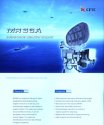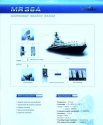Hi all;
I´ve another question about Type 055 class.
Having the Type 052C/D as adequate or better said, useful, the VHF Yagi radar for detecting stealth aircraft, why the Type 055 didn´t fit it?.
Which is, in your oppinion the radar or sensor most useful to detect stealth aircraft aboard the Type 055?.
Here in Spain, we are building the F110 frigate which has an integrated mast with S band and X band radar (very similar to this Type 055), but very lighter. But I have no idea why chinese PLAN have discarded the Yagi antenna aboard Type 055.
Thanks again.
Its a good question.
Maybe the designers of the Type 055 can better answer it. But in my perspective or opinion, there is one answer.
The main Type 346 radar on the 055 is much more powerful than the Type 346 radar on the 052C/D that it doesn't need the VHF array anymore. The Type 346 on the 055 is billed as the 346B version, compared to the 346 without a letter on the 052C, which is the original, and the 346A on the 052D (there should be a 346AG for the second and third batch of 052D.)
I take it that the lack of the VHF array on the 055 is an indicator that the 346B is at a performance level that makes the VHF array redundant.
There are two other indicators that the 055's Type 346B radar is is extremely powerful. One is that the ship has six generators on board the ship. Even assuming the ship has power requirements for the X-band AESA and those huge ECM panels the ship has, that seems to be a lot of electrical power for a ship that isn't integrated electric propulsion.
The second indicator is that the IFF units on the 055 are way bigger and thicker than the IFF units on the 052D. The capabilities of the IFF units needs to match the radars they are serving. If the radar can detect and track these number of units at these ranges, the IFF should be able to reach out and interrogate the same. These IFF units are what you see on top of the bridge vertically from each of the four panels of the radars. I have never seen anything like this on any warship in terms of size, and another thing to mention they are quite thick. The large and thick IFF units on the 055 may indicate they house powerful transmitters that require some kind of forced cooling either liquid or forced air cooling. These units must be able to interrogate a huge number of targets through a huge reach and volume of space, much more than the IFF on the 052D can. The IFF technology on the series have progressively moved from IFF strip within the array in the 052C, to external IFF units on the 052D which allows it to become bigger and allow access to passive air cooling. Now it has led to this.






